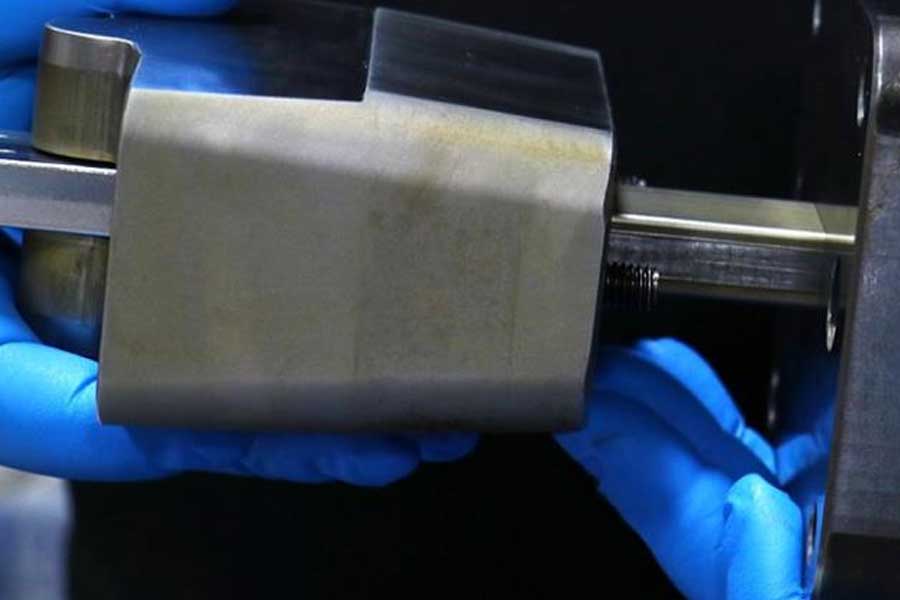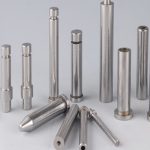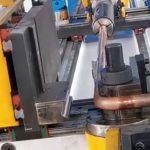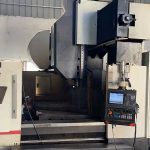Injection molders want plastic parts to be ejected easily and consistently quickly. Jammed parts can cause damage and may damage mold parts, resulting in longer cycle times, manufacturing delays, and increased costs. Experienced mold makers know how to manage the complexity of mold design through the necessary ejection strategies to improve part quality and save time and money throughout the life cycle of the mold.
In order to get the best injection system, your main considerations should include injection surface area, location and type. In this article, the editor of Xianji.com takes everyone to study these separately.
Ejection zone-smaller features, bigger problems
The correct ejection depends on the size and geometry of the part. Applying insufficient spray surface area can cause damage to the parts, deformation of the parts and slower circulation. Instead, you want to move to a larger spray surface area.
Smaller ejection features on plastic parts require smaller ejection components. Due to their fragility, these smaller components may cause installation difficulties and risks of wear and breakage during use. These factors will eventually increase the cost of tool manufacturing and long-term maintenance. Best practice tells us, please avoid using knockouts (KO) below 3/64 inches. Thin-walled plastic parts in diameter require customized thin-walled ejector sleeves. Molders should know that these types of bushings are not only expensive to manufacture, but they also won’t last as long as standard bushings.
Catapult position-better flapping effect
The ideal ejection surface is a flat surface, allowing the use of KO pins ground to the appropriate height. In cases where the feature does not provide a flat surface, the ejector assembly can conform to the geometry of the part. In some cases, severe contours may actually require part design changes. Remember that recessed flat surfaces promote correct ejection because they provide a surface parallel to the parting line, making plastic parts easier to knock out.
Insufficient ejectors can cause defects in plastic parts and ejector damage, so the molder should make mistakes on the side with more ejectors than might be needed. However, this principle must be weighed, because too many ejectors will eventually increase the wear and cost of the mold. In addition, placing the ejector too close will cause the steel mold wall to become thinner.
A skilled mold maker can optimize the number of ejectors while maintaining proper steel conditions. You want the mold maker to balance the layout of the ejector position to evenly lift the part.

Launch type-pros and cons
In an ideal situation, your mold maker can only use KO pins in plastic injection molds. However, most injection molded parts are not that simple. Common ejector options include pins, blades, sleeves, rods, stripper plates, and risers-each option has its own trade-offs. Different pop-up options will leave marks of different sizes and shapes on the parts and require different levels of maintenance.
Thimble provides the simplest and most cost-effective ejection system. As the default eject system, they leave solid circular eject marks on the part. The injection molding process puts a lot of pressure on the thimble during ejection, so a larger thimble diameter is a safer choice.
When the thimble cannot be accommodated within the allowable ejection range, the blade top knife is a good choice. These flat rectangular pins can be ejected into the thinner part area. The blade has a larger surface area than the pin, so it can wear faster. Due to its high degree of wear, the blade ejector can be integrated into the mold as an insert for easy replacement.
The ejection sleeve distributes the force evenly over the smaller circular features. The mark left on the part at the end of the ejection reflects the shape of the sleeve. Maintenance of the sleeve involves checking the fit between the outside of the core pin and the inside of the sleeve. Performing inspections can reduce the risk of plastic being injected into the injection system.
The ejector rod provides a good choice for ejecting on a certain length of plane. The ejection rod uses multiple pins and a flat rod with evenly distributed force is placed on top of it. Unlike previous ejection systems, these ejection systems tend to be larger and can utilize multiple pins under the rod. Due to the large size and high customization of the ejector pin, as the wear of the mold increases, the ejector pin usually has a higher cost and a higher maintenance cost.
The stripper system ejects parts on its periphery. Maintenance involves ensuring that the stripper plate or block lies flush with the rest of the mold. At the part level, the need for mold maintenance can be assessed by checking the flash on the part on the stripping template or scraper parting line.
The jack is mainly used to form the undercut, and also provides the ejection function together with other ejection systems. Unlike the vertical ejection system, the tappet is inclined on the core plate. In this way, the elevator can remove the undercut for ejection.
The injection mold designer should follow the preferred order of ejection types. KO pins are reliable, cheap to buy, easy to install, easy to maintain and easy to modify. The sleeves increase the cost of purchase and installation. KO blades require additional costs for pockets and accessories. Wire strippers are the most expensive ejection option because they are fully customized components driven by part geometry.
A strong ejection strategy will improve the quality of parts, optimize the immediate and long-term costs associated with the mold, and increase the time it takes for the mold to manufacture the parts, while the wrong ejection system will shorten the uptime and shorten the life of the mold.
Link to this article:How to get the best injection system?
Reprint Statement: If there are no special instructions, all articles on this site are original. Please indicate the source for reprinting:https://www.cncmachiningptj.com/,thanks!
 3, 4 and 5-axis precision CNC machining services for aluminum machining, beryllium, carbon steel, magnesium, titanium machining, Inconel, platinum, superalloy, acetal, polycarbonate, fiberglass, graphite and wood. Capable of machining parts up to 98 in. turning dia. and +/-0.001 in. straightness tolerance. Processes include milling, turning, drilling, boring, threading, tapping, forming, knurling, counterboring, countersinking, reaming and laser cutting. Secondary services such as assembly, centerless grinding, heat treating, plating and welding. Prototype and low to high volume production offered with maximum 50,000 units. Suitable for fluid power, pneumatics, hydraulics and valve applications. Serves the aerospace, aircraft, military, medical and defense industries.PTJ will strategize with you to provide the most cost-effective services to help you reach your target,Welcome to Contact us ( [email protected] ) directly for your new project.
3, 4 and 5-axis precision CNC machining services for aluminum machining, beryllium, carbon steel, magnesium, titanium machining, Inconel, platinum, superalloy, acetal, polycarbonate, fiberglass, graphite and wood. Capable of machining parts up to 98 in. turning dia. and +/-0.001 in. straightness tolerance. Processes include milling, turning, drilling, boring, threading, tapping, forming, knurling, counterboring, countersinking, reaming and laser cutting. Secondary services such as assembly, centerless grinding, heat treating, plating and welding. Prototype and low to high volume production offered with maximum 50,000 units. Suitable for fluid power, pneumatics, hydraulics and valve applications. Serves the aerospace, aircraft, military, medical and defense industries.PTJ will strategize with you to provide the most cost-effective services to help you reach your target,Welcome to Contact us ( [email protected] ) directly for your new project.
Link to this article:How to get the best injection system?
Reprint Statement: If there are no special instructions, all articles on this site are original. Please indicate the source for reprinting:Alloy Wiki,thanks!^^







